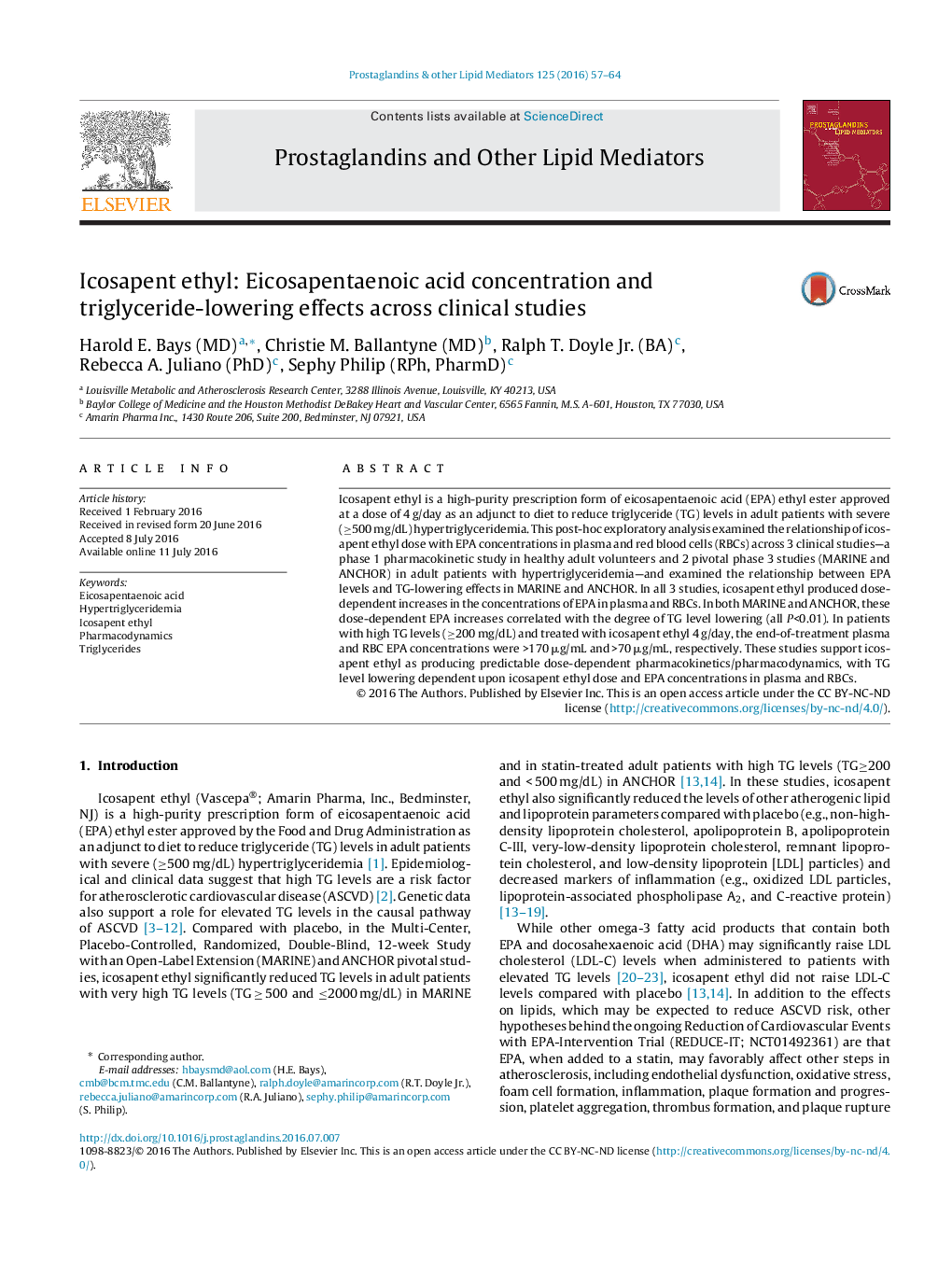| Article ID | Journal | Published Year | Pages | File Type |
|---|---|---|---|---|
| 5515944 | Prostaglandins & Other Lipid Mediators | 2016 | 8 Pages |
â¢Icosapent ethyl exhibits dose-dependent and predictable PK/PD.â¢EPA exposure and TG-lowering efficacy increase dose-dependently with icosapent ethyl.â¢Plasma EPA was > 170 μg/mL with icosapent ethyl 4 g/day in patients with TGs â¥Â 200 mg/dL.â¢RBC EPA was > 70 μg/mL with icosapent ethyl 4 g/day in patients with TGs â¥Â 200 mg/dL.
Icosapent ethyl is a high-purity prescription form of eicosapentaenoic acid (EPA) ethyl ester approved at a dose of 4 g/day as an adjunct to diet to reduce triglyceride (TG) levels in adult patients with severe (â¥500 mg/dL) hypertriglyceridemia. This post-hoc exploratory analysis examined the relationship of icosapent ethyl dose with EPA concentrations in plasma and red blood cells (RBCs) across 3 clinical studies-a phase 1 pharmacokinetic study in healthy adult volunteers and 2 pivotal phase 3 studies (MARINE and ANCHOR) in adult patients with hypertriglyceridemia-and examined the relationship between EPA levels and TG-lowering effects in MARINE and ANCHOR. In all 3 studies, icosapent ethyl produced dose-dependent increases in the concentrations of EPA in plasma and RBCs. In both MARINE and ANCHOR, these dose-dependent EPA increases correlated with the degree of TG level lowering (all P<0.01). In patients with high TG levels (â¥200 mg/dL) and treated with icosapent ethyl 4 g/day, the end-of-treatment plasma and RBC EPA concentrations were >170 μg/mL and >70 μg/mL, respectively. These studies support icosapent ethyl as producing predictable dose-dependent pharmacokinetics/pharmacodynamics, with TG level lowering dependent upon icosapent ethyl dose and EPA concentrations in plasma and RBCs.
